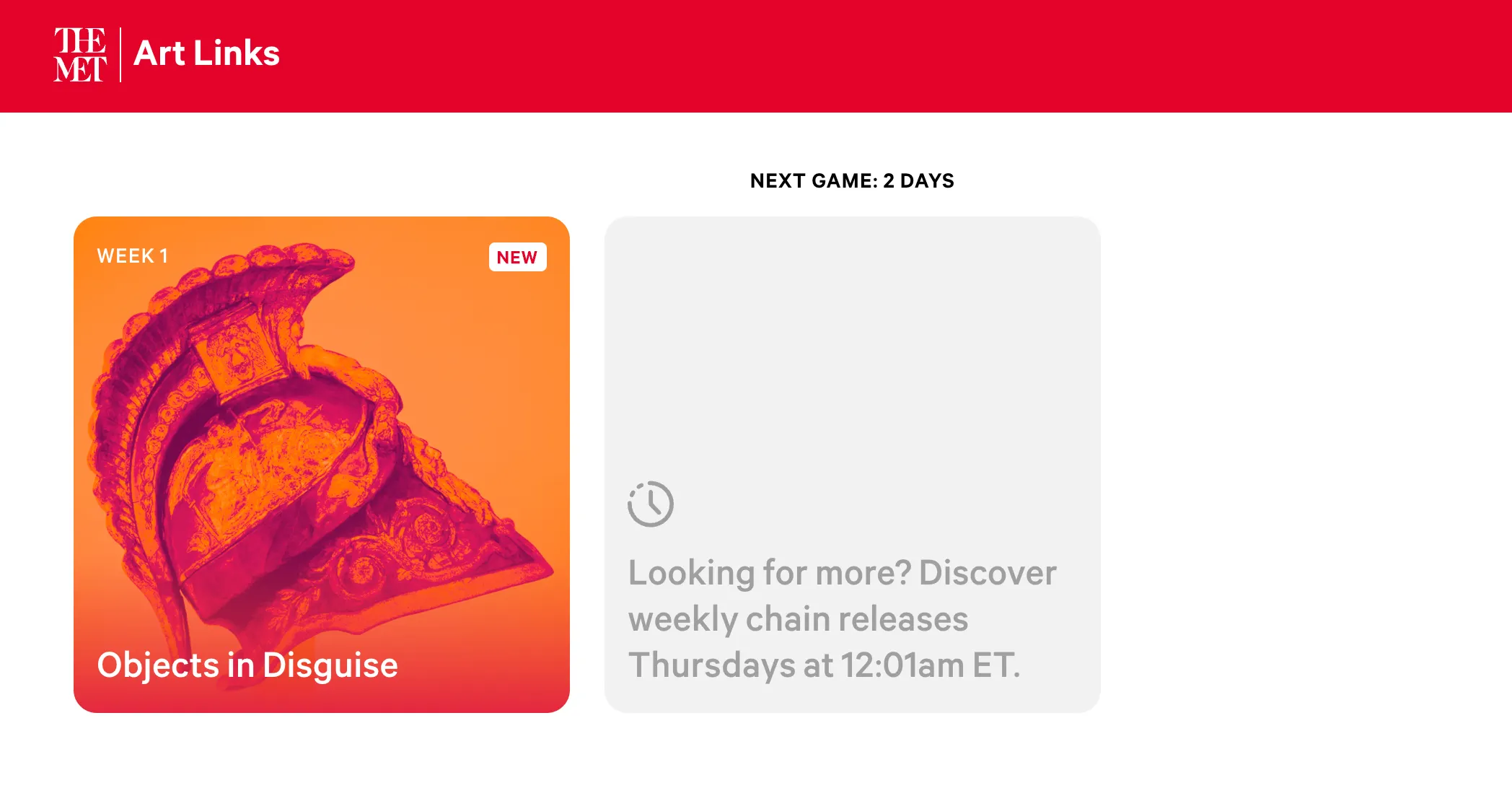New York’s Metropolitan Museum of Art is using Web3 gaming and NFT rewards to encourage visitors to explore the world of art history. The new game, called Art Links, invites players to identify common threads and connections between more than 140 works of art from The Met’s collection, with new challenges released weekly.
It is built on Coinbase’s Base blockchain in collaboration with start-up TR Labs. In the game, players must create a chain consisting of seven works of art and six connections. They have four attempts to complete each chain.
The game offers several types of possible connections, such as the artistic movement the work was part of or the materials used. For example, a player might make a connection by correctly identifying that two pieces are physically made of the same materials or are part of the “Cubist” movement.
Players can also connect works of art through ’emojis’, shared characters and symbols. After successfully finding art-based connections (or ‘chains’) between works, players can claim free NFT badges and earn achievements.
Players who complete these achievements can unlock real-life rewards, such as discounts at The Met Store or private, curator-led tours. Art Links also includes built-in learning moments, available via clickable icons, so users can refresh their knowledge of art history.
The game is now available on The Met’s website and will run for a total of twelve weeks.

Source: The Met
This isn’t the museum’s first foray into blockchain, but it is a little different. In 2023, Met The Met partnered with the gaming platform for Replica, an augmented reality mission-based app (available for iOS and Android) tied to a Met experience within the Roblox metaverse. The app, created in collaboration with technology partner Verizon, led visitors via an interactive map to 37 selected physical works of art throughout the museum, which they could further explore by scanning the relevant pieces.
In return, players could score digital collectibles, such as Van Gogh’s famous straw hat, for their avatars.
Themes explored in the game include ‘Objects in Disguise’, highlighting works of art made from surprising and deliberately misleading materials, such as Paper Med No. 18 by Su Xianzhong. The game also explores ‘Art x Tech’, featuring works that explore artists’ dialogue with technological innovation over time, including Matthew Jensen’s The 49 states.
The Met’s show of confidence in blockchain technology comes at a time when demand for NFT art has largely cooled. NFT trading volumes on marketplace Magic Eden are down 91% from all-time highs, and the mainstream art world appears to be turning its attention elsewhere.
Record-holding digital artist Beeple said in December that the NFT market had “come back to earth” and that speculators have “moved on,” though he noted that “there’s still a lot of excitement around this stuff.”
Nevertheless, intersections between high-profile art institutions and the NFT space continue to emerge.
In October, Christie’s London organized an auction for To rise, a dynamic digital work of art inscribed in Bitcoin’s Ordinals protocol – a first for the auction house.
Edited by Stacy Elliott.

